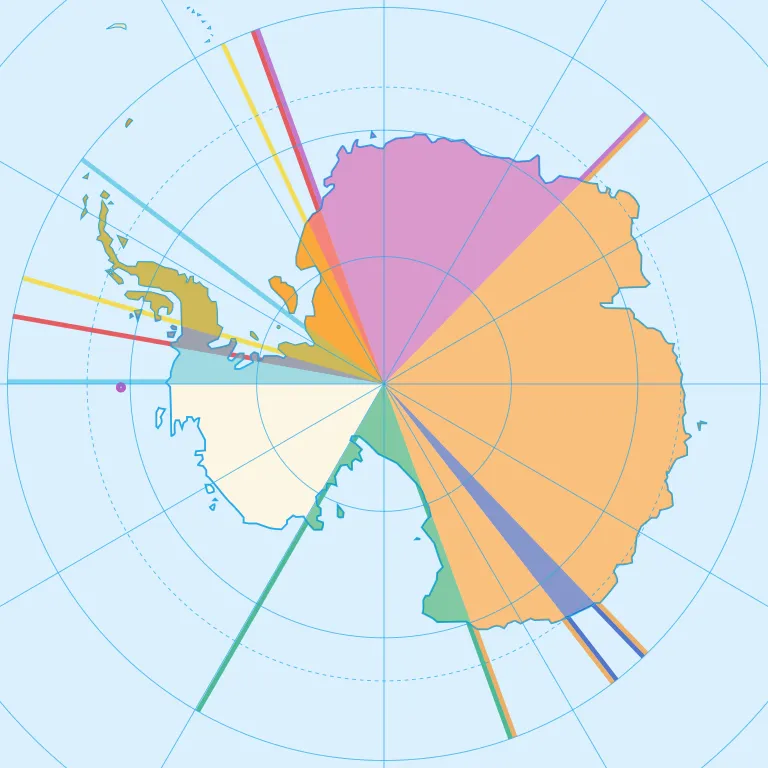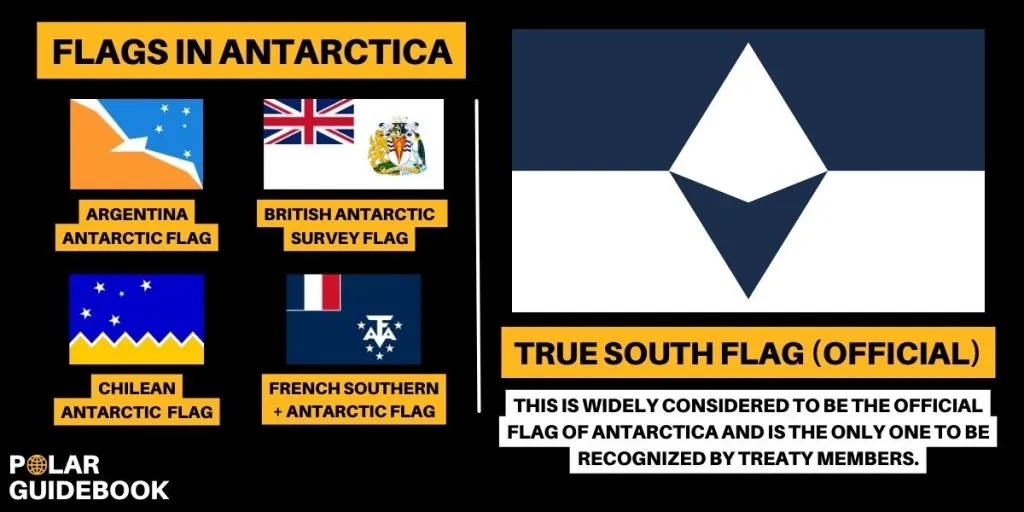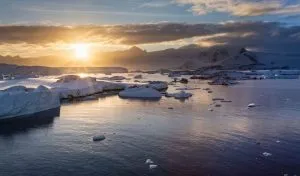Antarctica is the world’s southernmost landmass and the fifth-largest continent. But, it wasn’t discovered until long after all the other continents. But now that we know about it, who actually owns Antarctica?
Antarctica is not owned by anyone. Whilst there have been territorial claims made in the past by 7 nations (Argentina, Australia, Chile, France, New Zealand, Norway, and the UK), few of these are recognized by other states and since the introduction of the Antarctic Treaty, no new claims can be made.
Keep reading to find out more about how the Antarctic Treaty affects the existing claims and to find out who sets the rules in a place with no government.
Who Owns Antarctica?
Antarctica is not owned by any single nation. Up until 1961, seven countries had laid territorial claims to the continent.
However, it is now governed by the Antarctic Treaty which sets aside any sovereignty disputes between signatories and stops anyone from placing new claims or expanding existing claims.
Since nobody owns Antarctica, you might think that it has no laws. Well, you’d be slightly wrong there as the Antarctic Treaty and related documents set a framework for life in Antarctica and some basic rules. Day-to-day rules are then decided upon at an annual meeting of all signatories, more on this later.
Since you cannot be a citizen of Antarctica, those entering will be citizens of other countries. If your government has signed the Antarctic Treaty, then the rules of the treaty are effectively laws to you.
Territorial Claims in Antarctica (With Map)
Prior to the introduction of the Antarctic Treaty, the seven countries that made territorial claims to the continent are Argentina, Australia, Chile, France, New Zealand, Norway, and the United Kingdom.
Neither the United States nor Russia (the Soviet Union at the time) made formal claims, despite being active in Antarctica during this period. Although both claim that they still have the right to make a claim if they wish.
Not all of the countries recognized all of the other countries’ claims which is why some of the claims overlap. The UK, France, Australia, New Zealand, and Norway all recognized each other’s claims, however, there were large disputes between Argentina, Chile, and the UK whose claims overlapped.

What is the Antarctic Treaty?
The Antarctic Treaty and other related agreements (collectively known as the Antarctic Treaty System or ATS) is the group of documents that governs life in Antarctica.
At its core, the Antarctic Treaty states that:
- Antarctica shall be used for peaceful purposes only
- Freedom of scientific investigation in Antarctica and cooperation toward that end… shall continue
- Scientific observations and results from Antarctica shall be exchanged and made freely available
The agreement first came into force on June 23, 1961, and has now been signed by 54 different countries (full list below). The rules of the treaty apply everywhere south of 60°S latitude.
Additions have been made to the treaty over time, most notable the Environmental Protocol which came into force in 1998 and designates Antarctica as a “natural reserve, devoted to peace and science”1 (source: Secretariat of the Antarctic Treaty).
The Environmental Protocol provides protection to all the plants and animals within Antarctica, places a ban on commercial mining, and sets rules about pollution and waste disposal on the continent.
Who Has Signed the Treaty?
The treaty was established by the 12 countries that were active in Antarctica during this time: Argentina, Australia, Belgium, Chile, France, Japan, New Zealand, Norway, South Africa, the Soviet Union, the UK, and the US. However, it has since been agreed to by 54 countries2 (source: US Department of State).
There are two types of signatories to the Antarctic Treaty:
- Consultative – This includes the original signatories and those who conduct ‘substantial research activity there’3 (source: Secretariat of the Antarctic Treaty).
- Non-Consultative – Other countries that have acceded to the treaty but do not have a strong presence in the region.
The main difference between the two is that consultative parties take part in decision-making about the rules and regulations that govern Antarctica.
Here is a full list of signatories to the Antarctic Treaty:
| Country | Ratification | Status |
|---|---|---|
| Argentina | Jun 23, 1961 | Consultative |
| Australia | Jun 23, 1961 | Consultative |
| Austria | Aug 25, 1987 | Non-Consultative |
| Belarus | Dec 27, 2006 | Non-Consultative |
| Belgium | Jul 26, 1960 | Consultative |
| Brazil | May 16, 1975 | Consultative |
| Bulgaria | Sep 11, 1978 | Consultative |
| Canada | May 4, 1988 | Non-Consultative |
| Chile | Jun 23, 1961 | Consultative |
| China | Jun 8, 1983 | Consultative |
| Colombia | Jan 31, 1989 | Non-Consultative |
| Cuba | Aug 16, 1984 | Non-Consultative |
| Czech Republic | Jan 1, 1993 | Consultative |
| Denmark | May 20, 1965 | Non-Consultative |
| Ecuador | Sep 15, 1987 | Consultative |
| Estonia | May 17, 2001 | Non-Consultative |
| Finland | May 15, 1984 | Consultative |
| France | Sep 16, 1960 | Consultative |
| Germany | Feb 5, 1979 | Consultative |
| Greece | Jan 8, 1987 | Non-Consultative |
| Guatemala | Jul 31, 1991 | Non-Consultative |
| Hungary | Jan 27, 1984 | Non-Consultative |
| Iceland | Oct 13, 2015 | Non-Consultative |
| India | Aug 19, 1983 | Consultative |
| Italy | Mar 18, 1981 | Consultative |
| Japan | Aug 4, 1960 | Consultative |
| Kazakhstan | Jan 27, 2015 | Non-Consultative |
| Malaysia | Oct 31, 2011 | Non-Consultative |
| Monaco | May 31, 2008 | Non-Consultative |
| Mongolia | Mar 23, 2015 | Non-Consultative |
| Netherlands | Mar 30, 1967 | Consultative |
| New Zealand | Nov 1, 1960 | Consultative |
| North Korea | Jan 21, 1987 | Non-Consultative |
| Norway | Aug 24, 1960 | Consultative |
| Pakistan | Mar 1, 2012 | Non-Consultative |
| Papua New Guinea | Mar 16, 1981 | Non-Consultative |
| Peru | Apr 10, 1981 | Consultative |
| Poland | Jun 8, 1961 | Consultative |
| Portugal | Jan 29, 2010 | Non-Consultative |
| Romania | Sep 15, 1971 | Non-Consultative |
| Russia† | Nov 2, 1960 | Consultative |
| Slovakia | Jan 1, 1993 | Non-Consultative |
| Slovenia | Apr 22, 2019 | Non-Consultative |
| South Africa | Jun 21, 1960 | Consultative |
| South Korea | Nov 28, 1986 | Consultative |
| Spain | Mar 31, 1982 | Consultative |
| Sweden | Apr 24, 1984 | Consultative |
| Switzerland | Nov 15, 1990 | Non-Consultative |
| Turkey | Jan 24, 1996 | Non-Consultative |
| Ukraine | Oct 28, 1992 | Consultative |
| United Kingdom (claim)* | May 31, 1960 | Consultative |
| United States | Aug 18, 1960 | Consultative |
| Uruguay | Jan 11, 1980 | Consultative |
| Venezuela | May 24, 1999 | Non-Consultative |
Who Governs Antarctica?
Antarctica has no official government, however, those that visit the continent are subject to the laws of their own country (if their country is a signatory of the Antarctic Treaty) or the country that gave them permission to visit.
Additional rules and regulations that govern life in Antarctica are agreed upon at the annual Antarctic Treaty Consultative Meeting (ATCM) which is attended by treaty members.
Only consultative parties (countries that conduct research in Antarctica) are involved in the decision-making, however, non-consultative parties are also allowed to be part of the discussion4 (source: Secretariat of the Antarctic Treaty).
There is a separate committee for aspects relating to the Environmental Protocol, this is called the Committee for Environmental Protection (CEP) and they usually meet at the same times as the ATCM.
Does Antarctica Have a Flag?
Yes, Antarctica has a flag called True South. The flag was designed by Evan Townsend, a journalist and polar advocate. It’s the only flag to be recognized by members of the Antarctic Treaty System and is flown at research stations across the continent.
The blue and white background represents the polar nights (days where the sun doesn’t rise) and midnight sun (nights where the sun doesn’t set) that the continent experiences. The white peak in the middle represents the diverse terrain of Antarctica whilst the blue shadow looks like a compass facing south.
Overall, the elements together form a diamond which is a symbol of hope that Antarctica will be a place of ‘peace, discovery, and cooperation for generations to come’5 (source: True South Flag).
Antarctica is a continent, not a country, which is why this fact about Antarctica is so unusual. It’s the only continent to have an official flag, although other continental organizations, such as the European Union, also have flags.
As well as the Antarctica flag, countries tend to fly their own national flag at their research stations too. A few countries, including Argentina, the UK, France, and Chile, also have a dedicated flag to represent their territories in Antarctica. These can be seen here.

Does PewDiePie Own Antarctica?
In a YouTube video released in 2021, PewDiePie announced to his 100million+ subscribers that he was making a claim to Antarctica and blew up the internet. At one point, even the Wikipedia page of Antarctica stated PewDiePie as an owner.
His basis of the claim was that part of the continent remains unclaimed. Whilst there was some truth to this, unfortunately, the territorial map he was using pre-dates the Antarctic Treaty which set aside all claims.
As a Swedish citizen, PewDiePie cannot own any part of Antarctica because his government signed the Antarctic Treaty on Apr 24, 19846 (source: Wikipedia), which means that he cannot stake a claim.
Also, just saying you own a piece of land doesn’t mean you own it, sorry PewDiePie.
Related Questions
Is Antarctica a Continent?
Yes, Antarctica is a continent because underneath all of the ice there is a landmass that sits on the Antarctic tectonic plate.
Antarctica has all of the characteristics of a continent including its size, being surrounded by a vast ocean, having unique geography, and unique vegetation.
Is Antarctica a Country?
No, Antarctica is not a country, nor are there any countries in Antarctica. It’s a continent that’s governed by the Antarctic Treaty which has been agreed upon by 54 countries from around the world.
Why is Antarctica guarded?
Antarctica is guarded and protected to ensure the preservation of its pristine environment and to prevent unauthorized activities that may harm its delicate ecosystems. The Antarctic Treaty System, an international agreement that governs the continent, prohibits military activities and aims to maintain Antarctica as a demilitarized zone7 (source: Antarctic Treaty Secretariat: https://www.ats.aq/e/peaceful.html). Additionally, monitoring and surveillance efforts are in place to deter illegal fishing, pollution, and other activities that could disrupt the fragile ecosystem of Antarctica.
Does anyone live in Antarctica?
Although Antarctica is not permanently inhabited by any indigenous populations, numerous countries operate research stations and field camps where scientists and support staff reside temporarily for scientific research purposes8 (source: National Science Foundation – Antarctic Program: https://www.usap.gov/). These research stations are primarily used for studies related to climate change, geology, astronomy, and biology. According to the Central Intelligence Agency, the population involved in scientific activity or protecting the Antarctic region varies from approximately 5,000 in summer to 1,100 in winter; in addition, approximately 1,000 personnel, including ship’s crew and scientists doing onboard research, are present in the waters of the treaty region9 (source: CIA: https://www.cia.gov/the-world-factbook/countries/antarctica/)
What are the 12 countries in Antarctica?
The original 12 countries that signed the Antarctic Treaty in 1959 and conduct scientific research in Antarctica are: Argentina, Australia, Belgium, Chile, France, Germany, Japan, New Zealand, Norway, Russia, South Africa, and the United Kingdom10 (source: Antarctic Treaty Secretariat – Parties: https://www.ats.aq/devAS/Parties?lang=e). These countries, known as Consultative Parties, actively participate in decision-making processes regarding the management and protection of Antarctica. Since 1959, an additional 44 countries have acceded to the Treaty and are entitled to join Consultative Meetings when they demonstrate their interest in Antarctica by “conducting substantial research activity there”11 (source: Antarctic Treaty Secretariat – Parties: https://www.ats.aq/devAS/Parties?lang=e).
What is the largest country in Antarctica?
While no country owns Antarctica, different countries have territorial claims over certain areas, which are not universally recognized. The largest territorial claim in Antarctica is by the Russian Federation, which asserts sovereignty over the largest portion of the continent12 (source: Central Intelligence Agency: https://www.cia.gov/the-world-factbook/countries/antarctica/). It is important to note that these territorial claims are subject to the Antarctic Treaty System, which limits activities related to territorial sovereignty and maintains the continent as a peaceful and cooperative scientific preserve.


![You are currently viewing Who Owns Antarctica in 2023? [Nobody – So, Who Makes the Rules?]](https://polarguidebook.com/wp-content/uploads/2022/03/Who-owns-antarctica.jpg)
![Read more about the article How Does Time Work in Antarctica? [+ Map of Antarctica Time Zones]](https://polarguidebook.com/wp-content/uploads/2022/03/how-does-time-work-in-antarctica-300x150.jpg)

